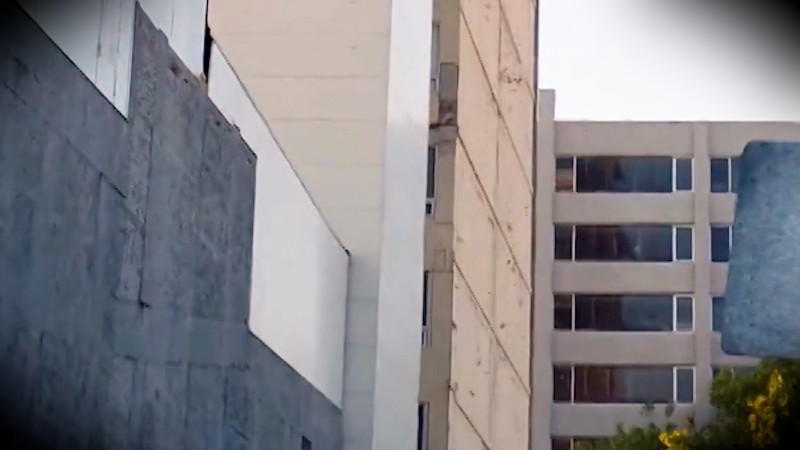Megaquake could trigger land drop, spike flood risk along West Coast, study says
It's a matter of when -- not if -- a significant earthquake will shake the Pacific Northwest, and a new study says some areas will sink, exposing entire communities to more extreme weather.

In this Thursday, Aug. 1, 2019, photo, evidence of a Cascadia earthquake's awesome destructive power is visible at the beach in Neskowin, Ore. A "ghost forest" of Sitka spruces juts up from the beach in the tiny town. The trees were likely buried by tsunami debris 2,000 years earlier, and partially uncovered by storms in 1997. (AP Photo/Andrew Selsky)
One of the most dangerous fault lines that threatens the United States lurks off the coast of the Pacific Northwest, capable of producing a Pacific-wide tsunami and dramatically changing the landscape of coastal regions forever.
The Cascadia Subduction Zone is a fault that stretches around 600 miles from Northern California to British Columbia. Most earthquakes that strike this area go unnoticed because it is located 70 to 100 miles offshore, but it is capable of generating monstrous tremors. According to Oregon State University, there is a 37% chance of a magnitude 8.0 earthquake or larger in the next 50 years. Tremors of at least magnitude 8.0 are sometimes called "megaquakes."
A new study published in the Proceedings of the National Academy of Sciences analyzed how such an earthquake could transform the Pacific Northwest, and it's not just powerful waves from a tsunami that could reshape the coastline.
"Along the Washington, Oregon, and northern California coasts, the next great Cascadia subduction zone earthquake could cause up to 2 m [6.5 feet] of sudden coastal subsidence, dramatically raising sea level, expanding floodplains, and increasing the flood risk to local communities," the study claimed.
An abrupt 6-foot drop in land could destroy local infrastructure, re-shape waterways and change the environment, including where certain types of plants can grow.

Data for the hazards of the Cascadia Subduction Zone – tsunamis, landslides, site amplification, turbidites, land-level change, and episodic tremor and slip. (USGS)
One of the biggest impacts of a sudden decline in elevation would be a significant increase in the flooding risk across the region.
If a megaquake occurred today, floodplains could expand by 90 to 300 square kilometers (56 to 186 square miles), more than doubling the flooding exposure of residents, structures and roads, the study stated.
In addition to skyrocketing insurance costs in the wake of such a disaster, businesses and homeowners may need to purchase expensive flood insurance for the first time due to the expansion of the region's floodplains.
When was the last major earthquake along the Cascadia Subduction Zone?
The last significant earthquake along the Cascadia Subduction Zone was Jan. 26, 1700, when an estimated magnitude 9.0 earthquake struck. This took place more than 100 years before Lewis and Clark traveled to the Pacific coast, but the date and estimated magnitude were determined by geologic markers and a Pacific-wide tsunami documented in Japan.
"Since over 300 years have passed, we worry about the next big event being imminent, and we expect something like the Japan 2011 and Sumatra 2004 earthquakes and tsunamis to occur there,” said Tina Dura, assistant professor of natural hazards at Virginia Tech College of Science.
Dura and their team also suspect the land will subside by at least 1 meter (3.3 feet) following the next major Cascadia earthquake. “We need to be thinking about this," Dura said. "For coastal communities to remain resilient, stakeholders and decision makers need to prepare for land subsidence from future Cascadia earthquakes.”
Report a Typo














